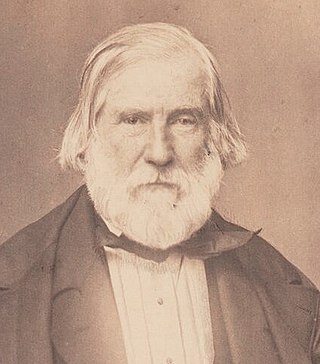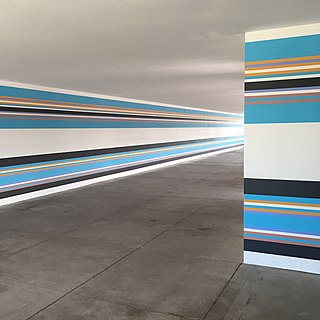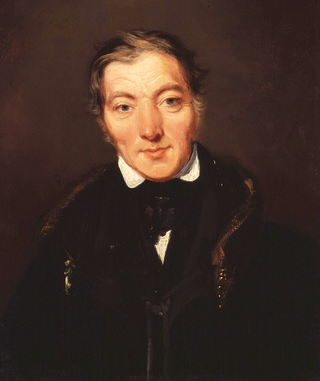Related Research Articles

Francis Danby was an Irish painter of the Romantic era. His imaginative, dramatic landscapes were comparable to those of John Martin. Danby initially developed his imaginative style while he was the central figure in a group of artists who have come to be known as the Bristol School. His period of greatest success was in London in the 1820s.

The absence of women from the canon of Western art has been a subject of inquiry and reconsideration since the early 1970s. Linda Nochlin's influential 1971 essay, "Why Have There Been No Great Women Artists?", examined the social and institutional barriers that blocked most women from entering artistic professions throughout history, prompted a new focus on women artists, their art and experiences, and contributed inspiration to the Feminist art movement. Although women artists have been involved in the making of art throughout history, their work, when compared to that of their male counterparts, has been often obfuscated, overlooked and undervalued. The Western canon has historically valued men's work over women's and attached gendered stereotypes to certain media, such as textile or fiber arts, to be primarily associated with women.

Rebecca Solomon was a 19th-century English Pre-Raphaelite draftsman, illustrator, engraver, and painter of social injustices. She is the second of three children who all became artists, in a prominent Jewish family.

Margaret Sarah Carpenter was an English painter. Noted in her time, she mostly painted portraits in the manner of Sir Thomas Lawrence. She was a close friend of Richard Parkes Bonington.

Lady Mabel Marguerite AnnesleyHRUA was a wood-engraver and watercolour painter. Her work is in many collections, including the British Museum, the Victoria and Albert Museum, the National Gallery of Canada and the Museum of New Zealand. She exhibited in the Festival of Britain in 1952.
James Barenger (1780–1831) was an English animal painter and illustrator.

Joanna Mary Boyce was a British painter associated with the Pre-Raphaelite Brotherhood. She is also known by her married name as Mrs. H.T. Wells, or as Joanna Mary Wells. She produced multiple works with historical themes, as well as portraits and sketches, and authored art criticism responding to her contemporaries. She was the sister of Pre-Raphaelite watercolourist George Price Boyce.

Thomas Brigstocke was a Welsh portrait painter. He studied art in London, and then spent eight years in Italy before returning to England. In the 1840s he visited Egypt, where he painted portraits of Mohammed Ali Pasha and his family.

William Henry Brooke (1772–1860) was a British artist and illustrator.
James M. Burnet was a Scottish painter of rural scenes, based in the London area for most of his career.
Anne Frances Byrne (1775–1837) was a British watercolor painter. Her subject material consisted mainly of birds, fruit and flowers painted in a realistic style. Anne came from a family of artists and occasionally butted heads with her contemporaries and faced criticisms due to sexism among artists and painters in her time.

Abraham Solomon was a British painter.

(John) Thomas Gaugain (1756–1831) was a successful British stipple-engraver.

Marie Françoise Catherine Doetger "Fanny" Corbaux (1812–1883) was a British painter and biblical commentator. She was also the inventor of kalsomine (calcimine), whitewash with added zinc oxide.

Eliza Bridell Fox, née Eliza Florance Fox (1824–1903), was a British painter and teacher.
Charlotte Sharpe and Mary Ann Sharpe were British artists.
Maria C. Hakewill was a British painter and writer.

Charlotte Nasmyth was a Scottish painter whose works were regarded at the time as "gems", and which are now included in the collections of the Scottish National Gallery and other museums.

William Henry Kearney, was an English water-colour painter of landscapes and figure subjects.
References
- ↑ Yeldham, Charlotte (2004). "Herford, Anne Laura". Oxford Dictionary of National Biography (online ed.). Oxford University Press. doi:10.1093/ref:odnb/69105.(Subscription or UK public library membership required.)
- ↑ Lewis, Reina (2013). Gendering Orientalism: Race, Femininity and Representation. Routledge.
- ↑ Cherry, Deborah (2012). Beyond the Frame: Feminism and Visual Culture, Britain 1850-1900. Routledge.
- ↑ Potter 2013, p. 129.
- ↑ Laura Hereford in Bénézit
- ↑ Bryan 1904, p. 36.
- ↑ Grey, Sara (2009). The Dictionary of British Women Artists. Casemate Publishers.
 This article incorporates text from this source, which is in the public domain : M. Bryan's Bryan's Dictionary of Painters and Engravers (1904)
This article incorporates text from this source, which is in the public domain : M. Bryan's Bryan's Dictionary of Painters and Engravers (1904)